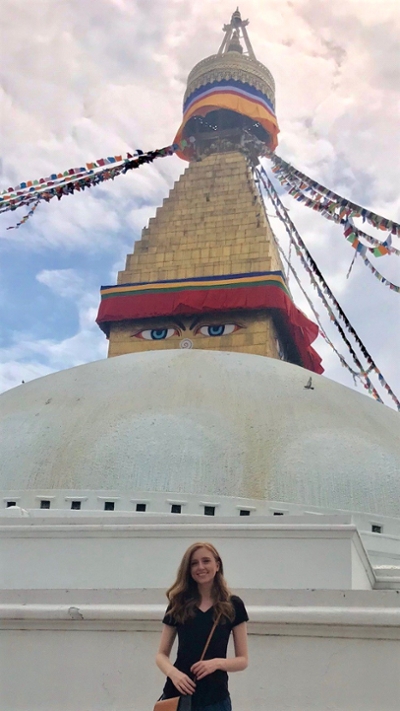Week 7: Collaboration Matters
Work Planning
Throughout much of my undergraduate experience, I worked in law firms. For the most part, I usually found the US office environment fast-paced and individualistic; meetings were intentionally kept short, serving as a time to quickly delegate responsibilities among the team or share major updates. After seven weeks in Kathmandu, I am learning to appreciate the emphasis on collaboration in the Nepalese workplace.
This past week, the Hamro Samman team conducted several work planning meetings for the next fiscal year, including a couple of days with most of the project’s key partner organizations present. Even though most of the meetings were in Nepali, my Chief of Party recommended I tag along to get better insight on the project’s upcoming objectives.
I expected most of the meetings to be simple PowerPoint presentations. Instead, I watched my co-workers lead the project’s partners through several workshop activities. Each organization conducted a sort of SWOT analysis to form recommendations on how to improve their involvement with the Hamro Samman project. Then, several posters were spread out around the room, labeled with the key objectives identified for the next fiscal year; the whole room was divided into three groups, identifying activities that should be conducted to achieve those objectives and the partner organization best equipped to carry out those activities.
From a western perspective, these kinds of meetings perhaps seem inefficient. There is a lot of time spent trying to come to a consensus rather than acting, but there is also a lot of opportunity for growth. I watched a room full of diverse advocates, ranging from shelter managers to legal experts, share their expertise on counter trafficking in persons efforts. So many people felt comfortable asking difficult questions, and I think that is so important; human trafficking is a complex, persistent crime. We should be having hard conversations, asking ourselves if we are really accomplishing what we set out to do.
Out of all the things this trip has taught me, perhaps one of the most important lessons is to slow down. I confess I am a pretty type A, task-oriented person, as I think many law students are. It is hard to not slip into having tunnel-vision, focused on accomplishing the assignment before me without asking for meaningful feedback from others. In Nepal, it is far too difficult to operate this way. I watch my co-workers take a genuine interest in each other’s work, and they are always willing to share their thoughts. Maybe it takes a little longer to get to a finished product than in the States, but the results reflect a passionate, collaborative effort. When it comes to advocacy, teamwork really does make a difference.
Kathmandu Tour
In a little over three weeks, I will be heading back to the States. With my time in Kathmandu quickly coming to an end, I decided to spend Sunday hitting some of the last few tourist sites on my list.
For the most part, I have visited the tourist sites here on my own. There are plenty of concerns here about ethical tourism, and it is hard to determine which companies pay their employees fairly and are safe for solo female travelers. However, I stumbled across a well-regarded tour company here that is entirely composed of female guides. I decided having a local to show me around some of the most important historical and religious sites in Kathmandu would be a nice change of pace, and I was also eager to support a little female entrepreneurship in what is primarily a male-dominated industry.
Kabita, my tour guide, was incredible. She told me she used to be a social studies teacher, having recently finished her master’s degree, but she liked being a tour guide better. As we headed to Boudhanath, one of the largest Buddhist stupas in Nepal, she told me how difficult it was for her to start working. Her family and even husband wanted her to stay home, but she very succinctly said, “I am an educated woman. Why should I have to follow such a narrow concept?” Well said.

After touring Boudhanath, we headed to Pashupatinath Temple, which sits at the bank of the Bagmati River. It is thought to be the oldest temple in Kathmandu, and, as one of the most important temples in the Hindu religion, non-Hindus are prohibited from entering inside. I felt hesitant to visit Pashupatinath; it is listed in all of the tourist guides, but it is also the place where Hindus cremate the dead, openly spreading the remains in the river. It seemed disrespectful to watch something so sensitive, but so many locals encouraged me to visit. One of my co-workers’ sisters even told me that she wished the main temple was open to non-Hindus. As we watched a cremation ceremony, Kabita explained that death is dealt with very publicly here, seen as just a part of the natural course of life.
It was a very somber experience, but I think the way the locals encourage tourists to witness the ceremony speaks to Nepal’s push for religious harmony. Overall, I am glad I went and had a local to walk me through it.